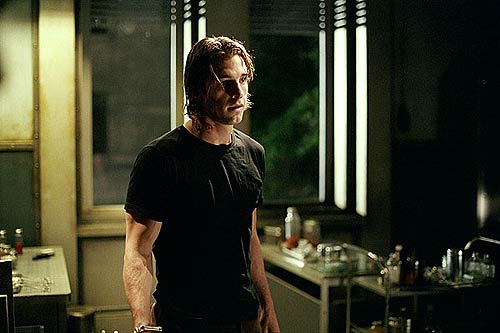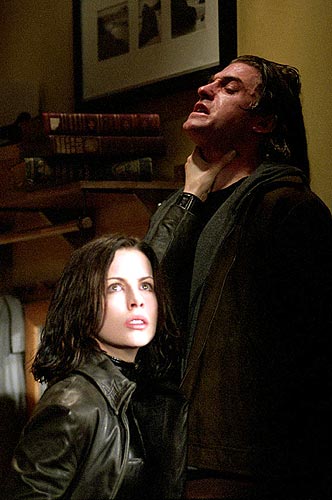The Gothic Film: From Classic to "Blockbuster"
The Gothic Hero: The New Victim and Villain
At the end of the twentieth century, the gothic is no longer a genre of film, but a style within other genres. Society, its beliefs and perspectives, have altered from the start of the twentieth century to the millennium, and the change in the gothic hero is one of these consequences.
While he was only classified as a hero, today's "gothic" hero has developed to retain elements of the villain and the heroine. In this new millennium "there is no single individual who is inherently evil", just as there is no single person who suffers. The new hero within the gothic style depicts the entangled qualities of people in society; he is the 'good' guy with a darker side, because of the pain he endures or had endured.
Today's society is full of images of violence that have developed from the codes of daily life. We have become accustomed to these codes, and it is through them that we relate to and understand the images we see. War is meant for the 'good' to conquer the 'bad', therefore, images of violence are simply a part of everyday life that every individual has to see.
 In
Underworld
(2003), Michael Corvin is the medical intern who is desired by and
fights against the villain. Along with being the hero figure, he
possesses the elements of the villain and heroine as well; Michael,
originally being a human, is, by the end, a mixture of two 'evils',
a mix of both lycan (werewolf) and vampire. Underworld is
a film narrative full of violence and blood, as these different
races and cultures fight against each other only to realize that
there is no reason to; lycans and vampires are both two forms of
'evil' and the 'undead'.
In
Underworld
(2003), Michael Corvin is the medical intern who is desired by and
fights against the villain. Along with being the hero figure, he
possesses the elements of the villain and heroine as well; Michael,
originally being a human, is, by the end, a mixture of two 'evils',
a mix of both lycan (werewolf) and vampire. Underworld is
a film narrative full of violence and blood, as these different
races and cultures fight against each other only to realize that
there is no reason to; lycans and vampires are both two forms of
'evil' and the 'undead'.
The hero in this film narrative is placed into a story within the general idea of the gothic; it possesses the feeling of the unknown and mysterious, yet is disguised within the genres of action and drama. As the hero, Michael conquers 'evil' in the end, but does so with his own 'evil'; he possesses the general idea of innocence, of which results in his victimization.
The hero is still a hero, but has gone from classical gothic hero to a hero of mixed qualities only surrounded by elements of the gothic.
Jelena Momirov

|
Disclaimer © 2003 - 2004 by class of SOSC 4319 at York University |